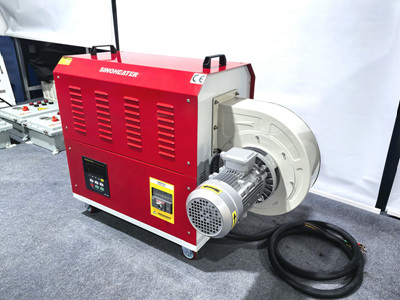Selecting a Heat Blower for Use in Electromagnetically Interfered Environments: Key Antenna Interference Resistance Considerations
Operating a heat blower in environments with electromagnetic interference (EMI)—such as industrial facilities, workshops with heavy machinery, or areas near radio transmitters—requires careful evaluation of its抗干扰性能 (anti-interference capabilities). Without adequate protection, EMI can disrupt control systems, trigger malfunctions, or even damage internal components. Below are critical factors to assess during the selection process.
1. Shielding Effectiveness of Electrical Components
The heat blower’s motor, control circuits, and sensors are vulnerable to EMI if not properly shielded. Look for designs that incorporate electromagnetic shielding materials, such as conductive enclosures or ferrite cores, around sensitive parts. These barriers reduce the risk of induced currents or voltage spikes disrupting operations.
Additionally, wiring layout plays a role. Twisted-pair cables or shielded conduits minimize electromagnetic coupling between wires and external interference sources. A lack of visible shielding in product descriptions or manuals may indicate susceptibility to EMI-related issues.
2. Compliance with Industry EMI Standards
Regulatory certifications like FCC Part 15 (for the U.S.), CE (for Europe), or IEC 61000 series provide assurance that the heat blower meets baseline EMI resistance requirements. These standards test devices for emissions (how much interference they generate) and immunity (how well they withstand external interference).
For example, a heat blower labeled “EMC-compliant” has undergone rigorous testing to ensure it won’t disrupt nearby equipment or fail in high-EMI zones. Prioritize products that explicitly reference such certifications in their specifications.
3. Robustness of Control Systems
Modern heat blowers often rely on digital controllers for temperature regulation or fan speed adjustments. These systems are prone to EMI-induced glitches, such as erratic behavior or unresponsive buttons. Opt for models with optically isolated control interfaces or hardware filters that block high-frequency noise from reaching microprocessors.
Analog controls, while less common, may offer inherent resistance to certain types of EMI. However, they lack the precision of digital systems, so balance reliability with functionality based on your needs.
4. Filtering Mechanisms for Power Input Stability
Voltage fluctuations caused by EMI can damage the heat blower’s power supply or cause intermittent operation. Devices equipped with electromagnetic interference filters (EMI filters) on their power inputs suppress noise from the mains supply, ensuring stable voltage delivery to internal components.
Check if the product mentions surge protection or line filtering features. These are particularly critical in environments with variable power quality or frequent electrical disturbances.
Final Considerations
Selecting a heat blower for EMI-prone settings demands a focus on shielding, certifications, control system design, and power stability. Avoid vague claims like “interference-resistant” without technical evidence. Instead, prioritize manufacturers that provide detailed documentation on EMI testing, component shielding methods, and compliance with global standards. By doing so, you ensure reliable performance even in challenging electromagnetic environments.




